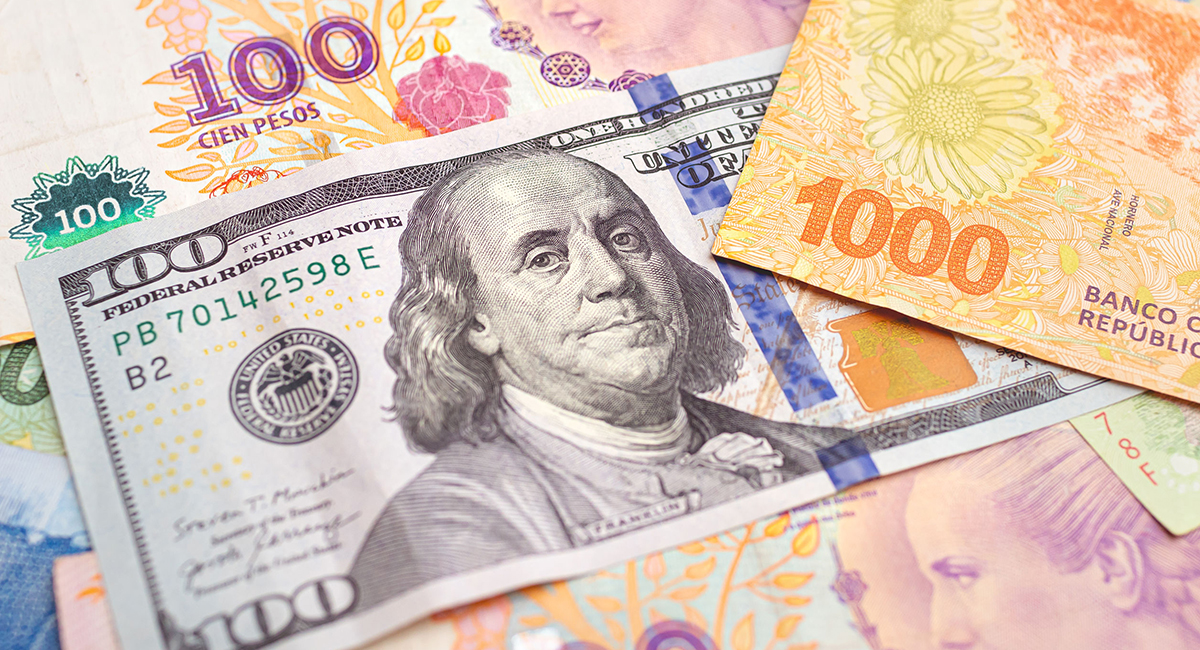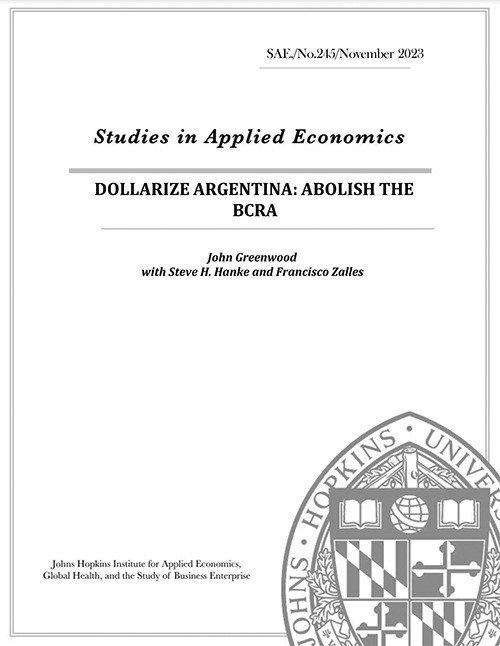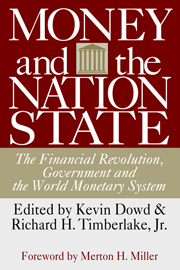OUTSIDE ARTICLE
Dollarize Argentina: Abolish the BCRA

Also published in Studies in Applied Economics Wed. November 1, 2023
Steve H. Hanke is a Senior Fellow at the Independent Institute and Professor of Applied Economics and Founder and Co-Director of the Institute for Applied Economics, Global Health, and the Study of Business Enterprise at Johns Hopkins University.
John Greenwood, OBE is Chief Economist of Invesco, Ltd.
Francisco Zalles is an adjunct scholar of the Ecuadorian Institute for Political Economy, and a past
professor of economics. He has frequently participated in various forums on dollarization and
money.
EconomyFederal Reserve and Central BankingGlobal FinanceInternational Economics and DevelopmentLatin America
Comments
Before posting, please read our Comment Policy.












